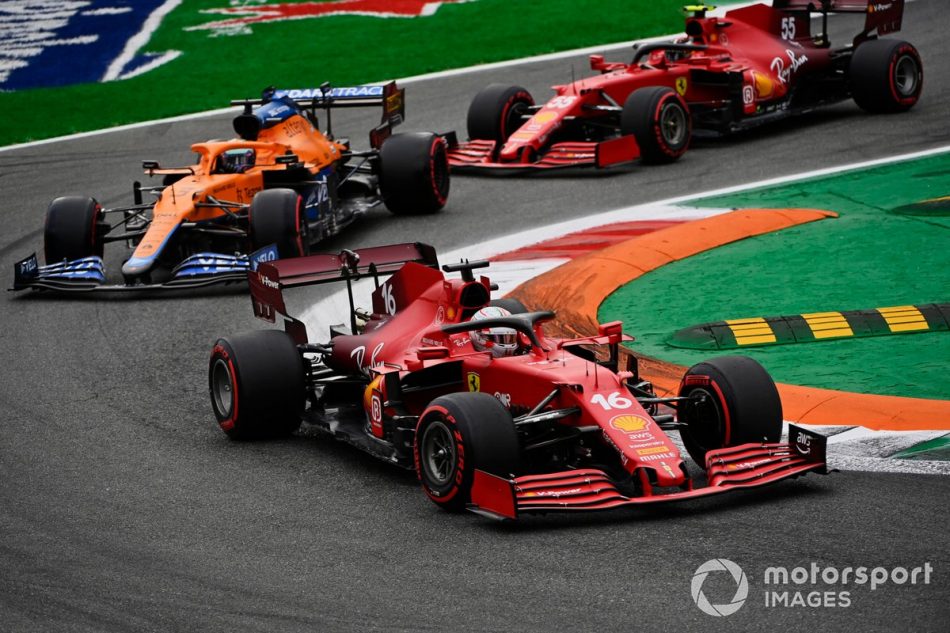Ferrari enjoyed a season-long battle with McLaren for P3 in the constructors’ championship that was only settled at the final race of the season.
A strong end of the year, aided by an upgraded hybrid system on its power unit, meant Ferrari finished the season 47.5 points clear in the final standings.
PLUS: How Ferrari triumphed in the battle for F1 2021’s best of the rest
Ferrari made clear throughout the season that its focus was on preparing for the incoming technical regulations for 2022, which are set to offer teams a big chance to make up time and reduce the gap to the front of the field.
Despite the closeness of the fight with McLaren, Ferrari sporting director Laurent Mekies explained that the team never gave any thought to extending its development cycle on the SF21 car.
“The answer is no,” Mekies said in a select media roundtable including Autosport in Abu Dhabi.
“I think we made very clear from very early on, we took the decision to switch to 2022.
“We were hoping at the time, because we are quite distant from McLaren, which is early on in the season, we were hoping that we would be able to fight eventually for the third place.
“But we had chosen to make zero compromise for 2022. So that’s probably the most clean answer I can give you today.
“We have been asked that 25 times, and no way. The only development we had in the second half of the year was the hybrid, which again is something we’ll use for next year.”

Charles Leclerc, Ferrari SF21, Daniel Ricciardo, McLaren MCL35M, and Carlos Sainz Jr., Ferrari SF21
Photo by: Mark Sutton / Motorsport Images
As part of its preparations for 2022 and a significant change in its power unit design, Ferrari introduced its upgraded hybrid system at the Russian Grand Prix in September.
While it offered a small performance boost that aided Ferrari in the fight against McLaren, Mekies said it was “nothing that could you say was a game changer”.
“But if you reflect on it, the gaps are so small, and we often look back and say well, if you didn’t have it, these few hundredths or tenths would have put you X backwards,” Mekies said.
“I think because the field is so [tight] we felt the effect it gave us in the second part of the season, or in the third part of the season, was more significant perhaps.
“The other aspect is, as I’m sure you recall, we were so exposed in overtaking situations that it was at some stages making the absolute pace of the car a bit less relevant, because we were then so exposed on the battle that once you have fallen back, that’s it.
“So that small help in that in the end also helped us to better exploit some of the potential of the car.”


